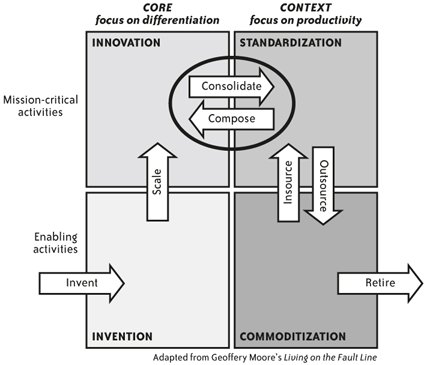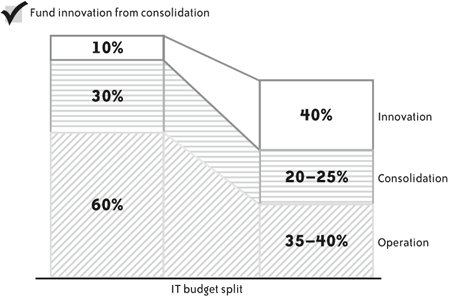Section 2.4. How does ESA enable consolidation and reuse?
2.4. How does ESA enable consolidation and reuse?Through the same set of attributes, actually. Because the enterprise services residing within ESA are loosely coupled, and the composition is not hardcoded, but rather, is assembled through process orchestration and modelingthey're just combinations and recombinations of underlying services, remember?consolidation is simpler. Instead of having to migrate data and applications to a new, streamlined set of best practices running on a different platform, the process in question is already running on that platform; at this point, it's just a relatively simple matter of reconfiguring the underlying scenarios, business processes, and process steps. Nowas someone once said, this is where the magic happensthose same enterprise services are able to unlock and recycle the functionality that used to go over the cliff. The investment in context now has a greater chance of supporting core activities. Because the process definition has been abstracted from the enterprise applications, it's possible to recombine the resulting enterprise services into new process steps and the like that can support business processes which are core. To understand what we mean, see Figure 2-4. Figure 2-4. Consolidate and compose business processes on one platform These recombinations are grouped together under the banner of composition. In the ESA universe, the IT department has a pair of new jobs: one team, the consolidators, is busy consolidating master data, data warehouses, and interfaces and rebuilding them as cost-efficient, contextual processes; a second team, the composers, is busy recomposing entirely new, potentially differentiating scenarios to support the latest and greatest innovation born inside the company's walls. Setting ESA apart from every IT architecture that has come before is the fact that both teams are building upon the same architecture and the same application platform erected from web services. (We'll spend more time talking about these and the other related teams in a new IT paradigm, the repository keepers and the disruptive innovators, in Chapter 3.) The pain points that previously afflicted ITthe high costs and complexity of integration, the expensive but pointless investment in inertia, and so onbegin to disappear. Turning back to Geoffrey Moore for a moment, consider this: the key to his argument in favor of outsourcing anything and everything that isn't core rests on the premise that resources saved from outsourcingor at the very least, consolidationmust be reallocated to core activities. As this applies to the business case for ESA, it means that consolidation can fund innovation, which is made more efficient through composition, as illustrated in Figure 2-5. Figure 2-5. Innovation funded by consolidation That's just the first step. Consolidation/composition is just the tactical benefit of ESA, one that we will explain next. |
EAN: 2147483647
Pages: 265